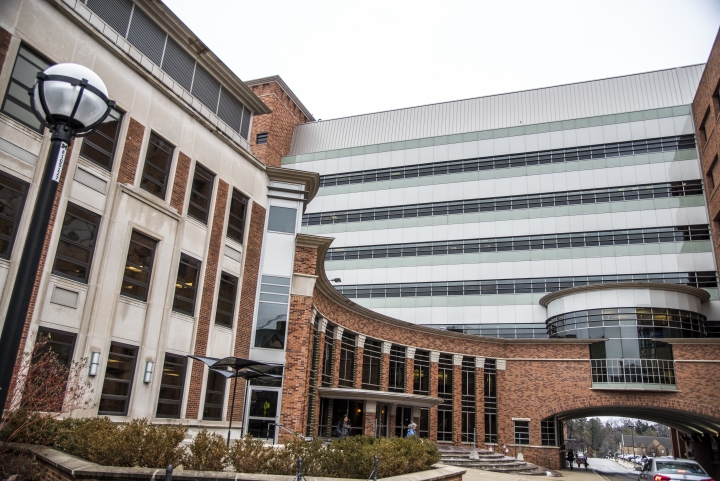
The University of Michigan’s discovery of gut bacteria in ill lungs has been entered into STAT Madness, a contest inspired by the NCAA’s March Madness tournament and run by STAT health news, aimed at finding the best innovations in science and medicine.
A research team lead by Dr. Robert Dickson of the University’s Division of Pulmonary and Critical Care Medicine discovered an increase in the severity of a patient’s illness was coupled with an increase in the amount of gut bacteria in the place of regular lung bacteria.
They concluded critical illness in the lungs affects the microbiome — microorganisms living in the body — more so than had been previously thought.
The research team was trying to determine was whether microorganisms or the body’s response to infections was responsible for intense critical illnesses.
Dr. Ben Singer, another member of the Division of Pulmonary and Critical Care medicine who worked on the project, said the main question he and Dickson were trying to answer was whether microorganisms or the body’s response to infections was responsible for intense critical illnesses.
Dickson explained the team observed animal models with a life-threatening condition called sepsis.
“In a patient with sepsis who has an infection, the body goes haywire and organs start shutting down,” he said. “It might start with a kidney infection or a urinary tract infection and suddenly, systems go haywire, their liver, brain, lungs stop working.”
Dickson’s team also observed patients with ARDS, a sudden lung failure syndrome that is developed by individuals with sepsis, and compared their lungs to healthy volunteers.
They found microorganisms originating from the gut in those lungs. Dickson mentioned the natural question then was how did they get there and there were some likely explanations they examined.
“One possible way was respiration but with our animal model we were able to rule that out,” Dickson said. “The more likely explanations were that one, the gut walls would leak and the bacteria would escape and migrate towards the lungs. The other explanation is the bacteria were already in the lungs, but with sepsis they were able to grow because it’s such a different ecosystem.”
Dickson’s team shedding light on this matter could alter the way medicine approaches such conditions. Study co-author Nicole Falkowski, a member of the Pulmonary and Critical Care Department, described what potential this discovery has for patients with sepsis or ARDS.
“By gaining a more clear understanding of what happens in patients who have suffered from sepsis or ARDS we point to potential therapeutic targets in these disease states,” Falkowski said.
Currently, Michigan Medicine is facing UPenn in the third round of the tournament. You can vote for Michigan and see the bracket by visiting the STAT Madness website.
Correction appended: A previous version of this article referred to the Department of Pulmonary and Critical Care. This has since been updated to the correct term: Division of Pulmonary and Critical Care Medicine. Dr. Ben Singer’s involvement in the project has also been clarified for accuracy.

